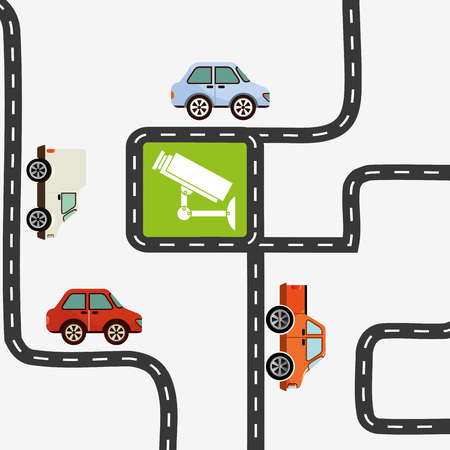Hitting the Road: Why State Minimums Matter
Before you rev up your engine and hit the open highway, there’s one crucial detail you can’t ignore: auto insurance minimums. These aren’t just bureaucratic red tape—they’re the backbone of road safety and financial protection for every driver in America. Each state sets its own legal minimums for car insurance, creating a patchwork of rules from coast to coast. Why do these minimums exist? At their core, they’re designed to protect both you and other drivers from the financial fallout of accidents. If someone gets hurt or property is damaged, state minimums ensure there’s at least a baseline level of coverage to help cover medical bills or repairs. But here’s where it gets interesting: what counts as “enough” varies wildly across the U.S., reflecting unique local laws, risk tolerance, and even regional driving habits. In some states, you might get by with just liability coverage, while others demand more robust policies that include personal injury protection or uninsured motorist coverage. As a self-employed driver or small business owner, understanding these differences isn’t just smart—it’s critical for controlling your exposure to risk on every mile of your journey.
2. Mapping Out State-By-State Differences
If you’re planning a cross-country road trip or just moving between states, it’s critical to understand that auto insurance minimums are anything but standardized across America. Each state sets its own legal requirements for drivers, and the differences can be surprising—even risky if you’re not prepared. Let’s break down how these minimums stack up and highlight a few outliers every traveler should know about.
Understanding the Patchwork of Minimums
While most states require liability insurance, the required amounts for bodily injury and property damage coverage can vary dramatically. Some states have robust requirements designed to offer strong protection, while others take a more minimalist approach. Here’s a snapshot of how these minimums compare:
| State | Bodily Injury Per Person | Bodily Injury Per Accident | Property Damage |
|---|---|---|---|
| California | $15,000 | $30,000 | $5,000 |
| Florida | No BI Required* | No BI Required* | $10,000 |
| Maine | $50,000 | $100,000 | $25,000 |
| Texas | $30,000 | $60,000 | $25,000 |
| Pennsylvania | $15,000 | $30,000 | $5,000 |
| Alaska | $50,000 | $100,000 | $25,000 |
| Lousiana | $15,000 | $30,000 | $25,000 |
| New Hampshire** | N/A (No mandatory insurance law) | N/A (No mandatory insurance law) | N/A (No mandatory insurance law) |
*Florida only requires Personal Injury Protection (PIP) and Property Damage Liability (PDL).
**New Hampshire does not require auto insurance unless you have certain violations.
Surprising Outliers & What Travelers Should Watch For
Maine and Alaska top the charts with the highest minimum liability requirements—meaning more financial protection in case of an accident. On the flip side, states like Florida have notably low property damage limits and do not require bodily injury liability at all unless you’ve been involved in certain offenses. New Hampshire stands out as the only state where drivers aren’t mandated to carry any auto insurance unless specific circumstances apply.
If you’re taking your car across state lines, remember: Your policy must always meet your home state’s minimums—but if you’re driving in another state with higher requirements and get into an accident there, your insurer will usually “step up” coverage temporarily to match local laws. Still, it pays to review your policy before you hit the road so you’re not caught off guard by unexpected gaps or exclusions.
This patchwork system means risk tolerance and financial exposure change dramatically from one border to the next. As a self-employed professional or road warrior managing your own liabilities, understanding these variations is key to keeping both your wallet and business safe on the road.

3. Risk on the Open Highway: Are Minimums Enough?
Every state sets its own auto insurance minimums, but here’s the million-dollar question: are these legal minimums truly enough to protect you? Let’s pull over and take a hard look at the risks of sticking with just the bare minimum coverage. When you’re cruising down Route 66 or navigating LA traffic, an accident can turn your road trip into a financial nightmare if your coverage doesn’t go the distance.
The Limits of “Legal” Protection
State-mandated minimums are designed as a safety net, not a shield. They often cover only bodily injury and property damage liability—think of it as covering what you owe to others, not what you need for yourself. If you’re at fault in a major accident, those limits can get blown through faster than a Mustang on the freeway. For example, California’s minimum liability is $15,000 per person for injuries. One night in the ER could eat up that entire amount—and leave you on the hook for thousands more.
Real-Life Wake-Up Calls
Take Sarah from Texas. She rear-ended another car on I-35 during rush hour. Her state minimum policy paid out quickly, but the other driver’s hospital bills and car repairs soared above her limit. Sarah faced lawsuits and wage garnishments, turning a moment’s distraction into years of financial stress.
Or consider Mike in Florida, who thought he was playing it safe with PIP (Personal Injury Protection) only. When a multi-car pileup totaled his SUV and sent him to physical therapy, he realized too late that minimums didn’t cover his own vehicle or all his medical expenses.
The Bottom Line
Minimums might satisfy the law, but they rarely satisfy reality—especially in states with high healthcare costs or expensive vehicles on the road. If your assets, savings, or business depend on staying protected, relying solely on state minimums is rolling the dice with your future. It pays to assess your risk appetite and adjust your coverage before hitting America’s highways.
4. Navigating Coverage Choices: Beyond the Bare Minimum
As a self-employed driver, you’re not just protecting your car—you’re safeguarding your livelihood. While every state sets a legal minimum for auto insurance, those baseline limits often fall short when it comes to real-world accidents and business risk. Choosing the right coverage means striking a smart balance between controlling costs and ensuring you’re not left holding the bag if something goes wrong on the road.
Assessing Your Risk Profile
Your insurance needs are unique if you use your vehicle for business—whether you’re delivering goods, meeting clients, or driving to job sites. Consider the following factors:
- Value of Your Assets: The more you have to lose, the higher your liability coverage should be.
- Type of Business Use: Commercial activities often require higher limits than personal driving.
- Mileage and Exposure: The more time on the road, the greater the risk of an accident.
Cost vs. Protection: Finding Your Sweet Spot
Let’s break down common coverage options and how they impact both cost and risk exposure for self-employed drivers:
| Coverage Type | What It Covers | Typical Minimum | Recommended for Self-Employed |
|---|---|---|---|
| Bodily Injury Liability | Injuries to others in an at-fault accident | $25k/$50k (varies by state) | $100k/$300k or more |
| Property Damage Liability | Damage to another’s property | $10k–$25k (state minimum) | $50k or higher |
| Uninsured/Underinsured Motorist | Your injuries/damages if other driver is uninsured/underinsured | Optional in many states | Match your liability limits |
| Comprehensive & Collision | Your own vehicle’s damage (accident, theft, etc.) | Not required by law | If your vehicle is essential to your business income |
| Commercial Auto Policy or Endorsement | Covers business use beyond personal policy scope | N/A (personal policies may exclude business use) | If vehicle is regularly used for business purposes |
The Self-Employed Edge: Practical Guidance
1. Shop for Customization: Not all insurers treat self-employment equally. Look for carriers that offer flexible endorsements or dedicated commercial policies.
2. Bundle Where Possible: Bundling auto with general liability or business owner’s policies can yield discounts and better protection.
3. Annual Review: Revisit your policy each year as your business grows or changes—what worked last year may not be enough today.
A Final Word on Balancing Cost and Coverage
Penny-pinching on premiums might save cash upfront but could expose your entire business to serious financial loss if an accident happens. Think like a risk manager: choose limits that realistically reflect what’s at stake, and let your insurance support—not sink—your entrepreneurial journey.
5. Pit Stops: Out-of-State Driving & Insurance Gaps
If you’re hitting the open road and crossing state lines, don’t assume your auto insurance automatically keeps up. Each state has its own minimum coverage requirements, and what’s legal in one might leave you exposed in another. For example, if you’re a Texan cruising through California, your liability limits may not meet California’s higher standards—potentially putting your wallet at risk if you get into an accident.
The Hidden Risk of Crossing Borders
Most insurance policies will automatically adjust to match the minimums of the state you’re visiting, but this isn’t a guarantee. Some policies have exclusions or limitations that can result in “coverage gaps,” especially with rental cars or specialty vehicles. If you’re self-employed and rely on your car for business, that gap could mean big trouble for both your finances and your reputation.
Multi-State Mishaps: Real-World Examples
Imagine getting rear-ended in a no-fault state like Michigan when your home policy is from Florida. Your claim process could be very different from what you’re used to—and if your coverage falls short, you might be on the hook for extra costs out-of-pocket. Even minor fender-benders can turn complicated quickly when state laws collide.
How to Avoid Coverage Gaps
Before starting your cross-country adventure, call your insurance agent and ask how your policy handles out-of-state incidents. Make sure you have proof of insurance that’s valid everywhere you plan to drive. Consider adding supplemental coverage or increasing your liability limits for extra peace of mind. And always double-check requirements if you rent a car—your personal policy may not cover everything, especially for business use or rideshare gigs.
Bottom line: Don’t let a simple pit stop become a financial pothole. Do your homework so you can enjoy the ride—no matter where the road takes you.
6. Checklist Before You Cruise: What to Review
Double-Check Your Policy Documents
Before you set out on your American road trip, take a moment to review your auto insurance policy. Make sure your insurance card is up-to-date and easily accessible in your glove compartment or digital wallet. Verify that your policy covers all drivers who may get behind the wheel, and double-check that your coverage meets or exceeds the minimum requirements for every state you plan to visit.
Review Your Coverage Details
Don’t just rely on minimums—review what’s actually covered. Confirm your liability limits, collision, and comprehensive coverage. If you’re renting a car, check whether your personal policy or credit card provides rental car coverage. For peace of mind, consider adding roadside assistance or uninsured motorist protection if you don’t already have them.
Important Coverage Add-Ons
- Roadside Assistance
- Rental Car Reimbursement
- Uninsured/Underinsured Motorist Protection
Check State-Specific Requirements
Each state sets its own minimums—so do your homework. Some require personal injury protection (PIP) or medical payments (MedPay). Others may have stricter liability requirements or mandate proof of insurance at all times. Use official DMV resources or your insurer’s website to confirm what’s needed in each state along your route.
Prepare Emergency Contacts & Documentation
Print out or save digital copies of emergency contacts, including your insurance agent, roadside assistance, and local authorities in the states you’ll visit. Keep a checklist of what to do in case of an accident—including how to document damage with photos and what information to collect from other parties involved.
Risk Management Tips for the Road:
- Plan routes in advance and share itineraries with someone you trust.
- Keep a spare tire, jack, jumper cables, and basic first aid kit in your vehicle.
- Know how to file a claim quickly if something goes wrong.
A little preparation goes a long way when it comes to protecting yourself, your passengers, and your financial well-being on the open road. By reviewing these essentials before you cruise through America’s highways, you’re setting yourself up for a safer—and far less stressful—journey.

